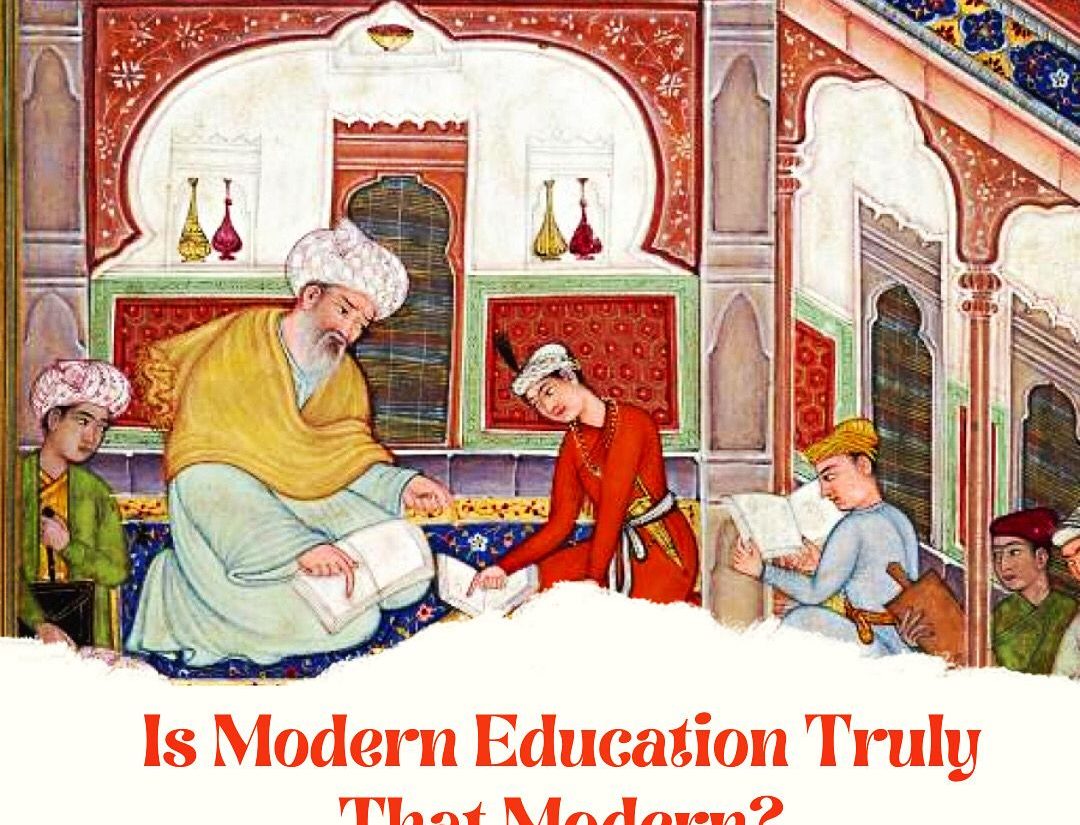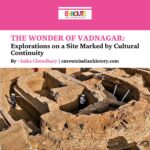
Article by EIH Researcher And Writer
Anupam Tripathi
Padhoge, likhoge, banoge nawab
Kheloge, koodoge, banoge kharaab
~ Indian Parents.
As Indians, our parents have always emphasized the importance of education. However, the educational scenario has not been the same since human existence. The Indian education system has evolved greatly from the Vedic period to today’s zoom lectures and open book exams. However, there is something the two scenarios have in common and that is the importance of education. But what exactly is education?
Education is a process by which a society transmits knowledge, wisdom and skills, formally and informally, from one generation to the next. It’s not a one-way process. It’s about teaching and learning from each other. Education is affected by human’s complexities; it tries to guide a person towards perfection. Since there are various definitions for perfection in different schools of thought, there are different ways leading to perfection. Some schools believe that education is the adults’ endeavour to adapt the kids to the environment, while others believe it is a way to activate people’s potential capacities.
The interaction of the Indian subcontinent and Islamic culture led to the establishment of a new educational system. Places in the north-western region where Arab settlers were found, Maktabs (institutions offering schooling) and Madrasas (institutions offering higher education) were built. Delhi became a place for refugees from Central Asia. These people brought their own culture with them. It was famous for its scholarship not only in the subcontinent, but also in the Islamic East. Isami pointed out in Futuh-us-Salatin that Sayyids from Arabia, learned men from Bukhara, Sufis and ascetics from different cities were well versed in the Unani education system. As a result of the amalgamation of these people, many maktabs and madrasas were established in cities and towns. They became one of the most important means of imparting knowledge. Maktabs were generally run by public donations, while madrasas were run by rulers and nobles. In the maktabs, children who belonged to common groups received an education. The type of education maktabs focused on was elementary education. In addition to religious instruction, the students were also taught reading, writing and arithmetic. Therefore, it can be stated that the emphasis was on basic literacy skills. After training in the maktab, individuals transferred to madrasas for higher education. In the medieval period, madrassas were the centres of higher learning. In the madrasa, people were trained in other areas besides religious education to prepare them practically. Subjects taught in madrasas included medicine, mathematics, history, geography, economics, political science, philosophy, astrology and law.
There were six different types of institutions, these included:
- those that were maintained by the rulers and the nobles
- those that were launched by the individual scholars with the help and support obtained from the state or donations
- those that were associated with the mosques
- those that were associated with the tombs
- those that were started by the individual scholars and
- those that were attached to the Sufi hospices.
Renowned madrasas were Muizzi, Nasiri and Firuzi madrasas in Delhi, Mohammed Gawan’s madrasas in Bidar and Abul Fazl madrasas in Fatehpur Sikri. The Sirat-i-Figuz Shahi lists 14 subjects that were taught in madrasas, such as jurisprudence or dirat. New dictionaries, like such as Farhang-i Jahangiri were published by scholars of various maktabs. Madrasas belonged to different schools of thought like Hanafi, Shafites etc. Teaching in these institutions was considered a noble activity. The prescribed age for starting the training was 4 years, 4 months, 4 days. Bismillah (in the name of God; an invocation used by Muslims at the beginning of an undertaking). was performed on that day. There were institutions reserved only for girls. Not only did Persian and Arabic works attract the attention of the state, but Sanskrit-based learning was also encouraged. However, the Brahmins depended more on the devotees than on the state.
Amir Khusrau not only developed the skills of writing, prose and poetry, but also formulated a new language suited to local conditions. Some of the contemporary scholars like Minhaj-us-Siraj, Ziauddin Barani and Afif have written about Indian Scholarship (Education in India ). A number of subjects were introduced, including logic, mathematics, geometry, history, geography, accounting, public administration, literature, science,
and astronomy. In addition, various strategies and methods were incorporated into the educational system, including reading, writing, discussion, reasoning, research and experimentation. The curriculum was divided into two categories: the traditional sciences (manqulat) and the rational sciences (maqulat). Law, history and literature, among others, were introduced among the traditional sciences. Logic, philosophy, medicine, mathematics and astronomy belonged to the rational sciences. The rational sciences were later emphasized more than the traditional sciences. Traditional subjects dominated education during the Iltutmish’s period, which lasted from 1211 CE to 1236 CE till the reign of Sikander Lodi from 1489 CE to 1517 CE. The education system began to change as logic and philosophy began to creep into the curriculum system.
Calligraphers played an important role in imparting knowledge. Calligraphers have been mentioned in biographical dictionaries sponsored by madrasas as well. Syed Mir Muhammad Amir was one of the most famous calligraphers of the 19th century. The book was another means of imparting knowledge (besides oral tradition). Books were handwritten for libraries, personal collections, etc. Books were considered personal property. On the death of the owner, the books were divided equally among the heirs.
References:
- Adarini Kanjilal Biswas, Development of education in India During the Medieval Period: A Historical Approach.
- S.Z.H. Jafri, Education and Transmission of Knowledge in Medieval India
- Lubna Irfan, Medieval Indian Madrasas
- S.Z.H Jafri, Religious Plurality


















